A quick post on Sunday afternoon from a thankfully cooler Brisbane (with the cricket out at tea) to briefly recap what we’ve seen happening over the weekend.
(A) Saturday was very hot in Victoria, South Australia and even Tassie
On Friday I posted a note of caution for those seemingly too trigger happy to talk about a stretched supply and demand balance and the triggering of the emergency “Reserve Trader” demand response measures that AEMO has assembled for next-to-last-resort protection of the system if supplies become stretched.
Yesterday I did take the time to have a quick look at demand in Victoria and post this image from our NEM-Watch Consumption Widget, which we are pleased to provide as a free access tool thanks to the sponsorship of Energy Consumers Australia:
As I had expected, demand was nowhere near the all-time record – however others did note to me that the demand did turn out about 600MW higher than the AEMO had originally forecast. Hence I quickly called up the Forecast Convergence Widget within ez2view to have a look at successive forecasts for Scheduled Demand on the day:
The higher-than-expected demand on Saturday can clearly be seen, with the actual Scheduled Demand topping out at around 8,000MW at 16:30 on the day (that’s NEM time, so add an hour to get 17:30 local time in Melbourne). That was about 500MW higher than the forecast for Scheduled Demand published by AEMO just prior to 09:48 (NEM time) on Friday (7,511MW shown in this image).
Now there could be a number of plausible reasons why such a forecast “error” might have come about (and frequent readers will remember that I have a great deal of sympathy for those whose role necessitates they engage in that “mug’s game”). Out of curiosity I flipped the view to look at successive forecasts from the AEMO for aggregate (large-scale) wind and solar generation in the region – revealing what seems to be one of the contributing factors:
Because this intermittent supply operates in front of (always) dispatchable generation it is not counted in the calculation of “Scheduled Demand”. Hence the fact that it unexpectedly disappeared (a couple hours earlier than forecast) will have contributed to the higher-than-forecast Scheduled Demand.
As noted before, forecasting is a somewhat thankless task, and one that seems to be increasingly difficult to get right (given the increasing number of independent variables playing a role). However it is also increasingly important in the new energy world we’re transitioning into.
(B) Sunday was very hot in New South Wales
Today it’s hot in Sydney, making me (almost) feel sorry for the English cricketers on a pretty “character building” day at the SCG. A little earlier, I was able to tweet this image from the ECA Widget:
Note the marked difference in the colour of demand for Victoria compared to Saturday – given the much lower temperatures (and natural reduction in Sunday demand).
A third quick post from Forecast Convergence from ez2view today, this time focused on the NSW region shows another example of the challenges in getting demand forecasts close to actuals:
Back to the cricket to see how many more wickets have fallen…


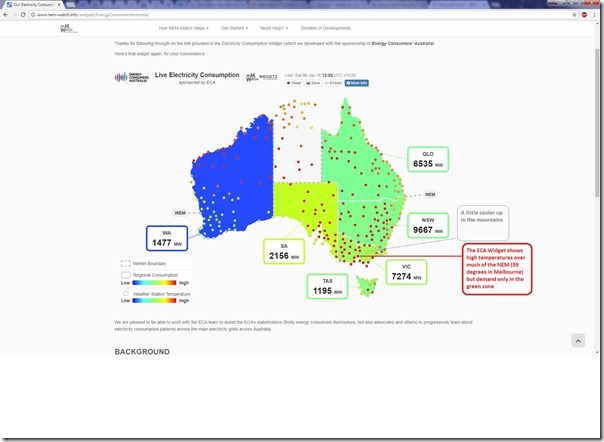
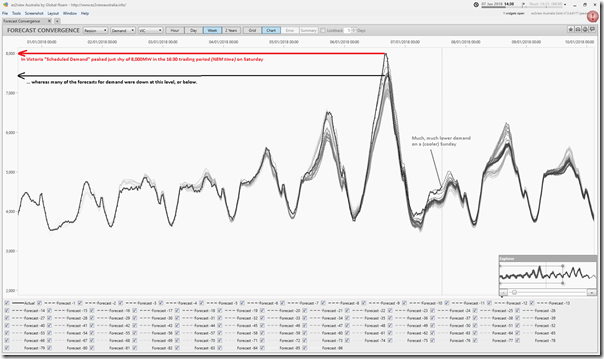
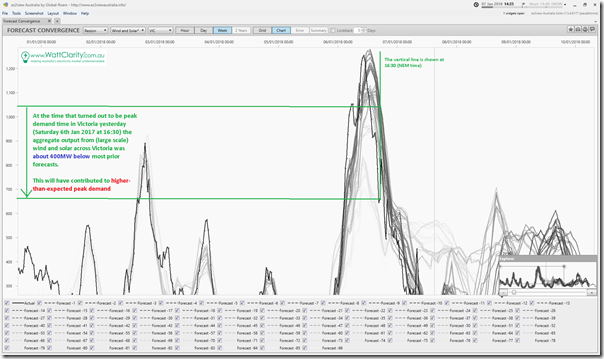
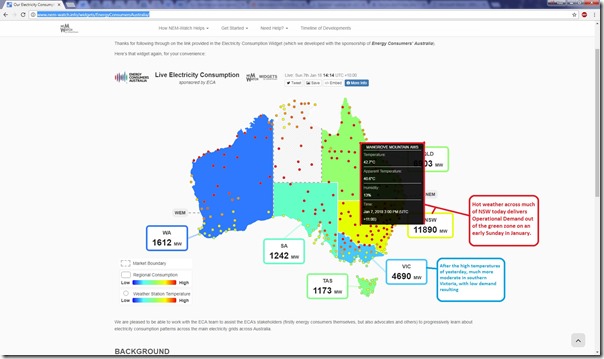
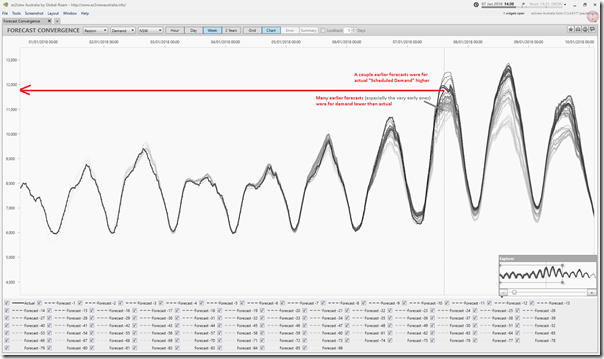
Be the first to comment on "A stinking hot weekend poses a reminder of the difficulty of forecasting electricity demand"